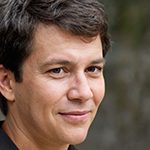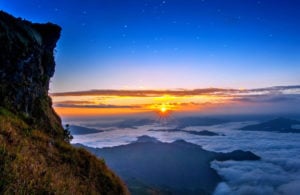7 Reasons to Visit Wat Suan Dok Temple in Chiang Mai
Wat Suan Dok, alternatively referred to as Wat Buppharam, is a prominent Royal Temple of the Third Class situated in the culturally rich city of Chiang Mai in Northern Thailand. Established in the 14th century, this striking Buddhist temple complex, located on Suthep Road approximately one kilometer west of the historic Suan Dok Gate, boasts a remarkable Lanna-style architecture that captures the essence of the region’s history. Wat Suan Dok is famous for its large open-air wihan, or assembly hall, which houses a revered 500-year-old bronze Buddha statue.
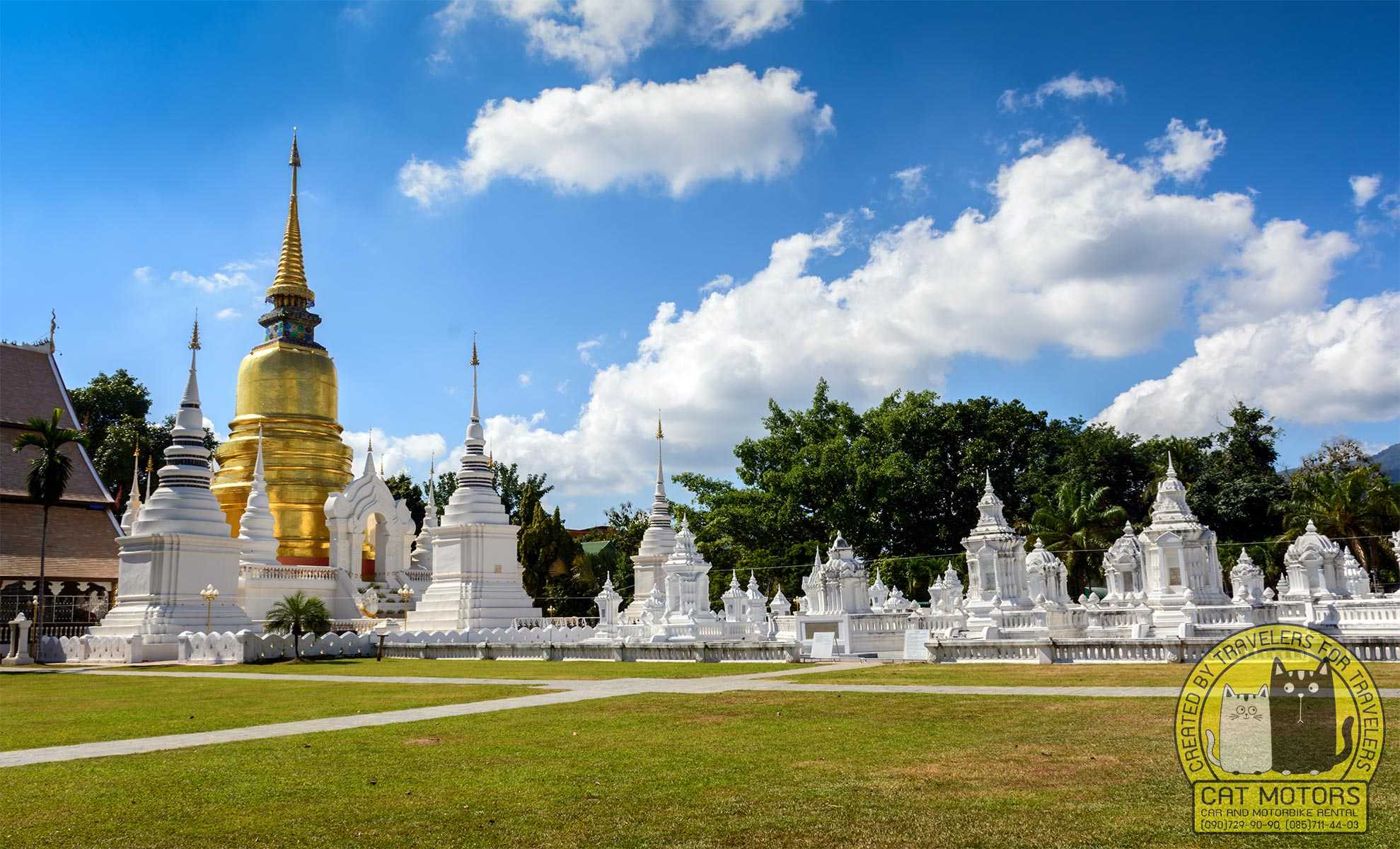
Wat Suan Dok, standing majestically within the heart of Chiang Mai, is an embodiment of deep-rooted Buddhist traditions, the glory of the Lanna Kingdom, and a thriving spiritual epicenter for the local community. As a seasoned globe-trotter, I’ve been privileged to witness numerous sacred spaces around the world, but few manage to encompass such profound historical, cultural, and religious significance as Wat Suan Dok.
Think of a sprawling field blossoming with myriad white chedis, monuments that whisper tales of the illustrious Lanna Kingdom. Founded in the 14th century by King Kuena, the name of this sacred sanctuary eloquently translates to “flower garden,” a testament to the stunning flora that adorns its surrounding landscapes.
As you traverse this serene, historical site, you will encounter several significant structures – from an expansive prayer hall and a well-stocked library to the sacred pagodas, the eternal resting places of Lanna Kingdom’s rulers. Nestled within its tranquil confines is also a monk school, a cradle for nurturing young minds in the philosophies of Buddhism.
To foreign guests drawn to the spiritual allure of Wat Suan Dok, it’s essential to respect the temple’s sanctity. This includes dressing modestly, refraining from disruptive noise or photography during prayer times, and respecting the sanctity of each corner of this historic site.
Significance for the Local Population
The richness of Wat Suan Dok extends beyond its stunning architecture. It has been a center for Buddhist education for centuries, an erstwhile royal palace, and is now home to a thriving Buddhist university. An important spiritual beacon for the locals, it has also captured the hearts of tourists around the globe.
Over the centuries, Wat Suan Dok has been touched by the hands of various monarchs. Additions like a chedi by King Mengrai in the 16th century and an assembly hall by King Kawila in the 19th century, reflect their influence. The temple is a repository of precious relics, including an esteemed Buddha image and the ashes of Lanna kings.
As you wander through the temple grounds, don’t miss the awe-inspiring assembly hall, a shining example of Lanna-style architecture. From the array of magnificent Buddha images to the collection of white chedis, Wat Suan Dok is an enchanting journey into Chiang Mai’s spiritual heart.
Extend your exploration to nearby attractions such as the bustling Nimmanhaemin Road, the scholarly Chiang Mai University campus, and the panoramic Doi Suthep-Pui National Park.
In essence, Wat Suan Dok is a living testament to Chiang Mai’s profound spiritual heritage, combining stunning architecture, tranquil gardens, and deep religious reverence. It’s a pilgrimage that transcends being a mere touristic experience, offering a peek into the vibrant cultural tapestry of Thailand.
Location And Accessibility
Wat Suan Dok is located west of Chiang Mai, about 3 kilometers from the city center. It is easily accessible by public transportation, with buses and tuk-tuks running regularly to and from the temple. The trip will take about 5-10 minutes and will not cost more than 40 baht. Also, if you rent a motorbike in Chiang Mai, it’s very easy to get here from anywhere in the city.
Entrance to Wat Suandok is completely free, but donations of a reasonable amount are welcome to support the temple and the monastic community. Wat Suandok is located on Suthep Road near Chiang Mai University.
Site And Architecture
The temple consists of two main parts, the inner courtyard, and the outer courtyard. The inner courtyard contains several statues of Buddha and mythological celestial beings. In contrast, the outer courtyard has chedis (bell-shaped structures) and mondops (square pavilions).
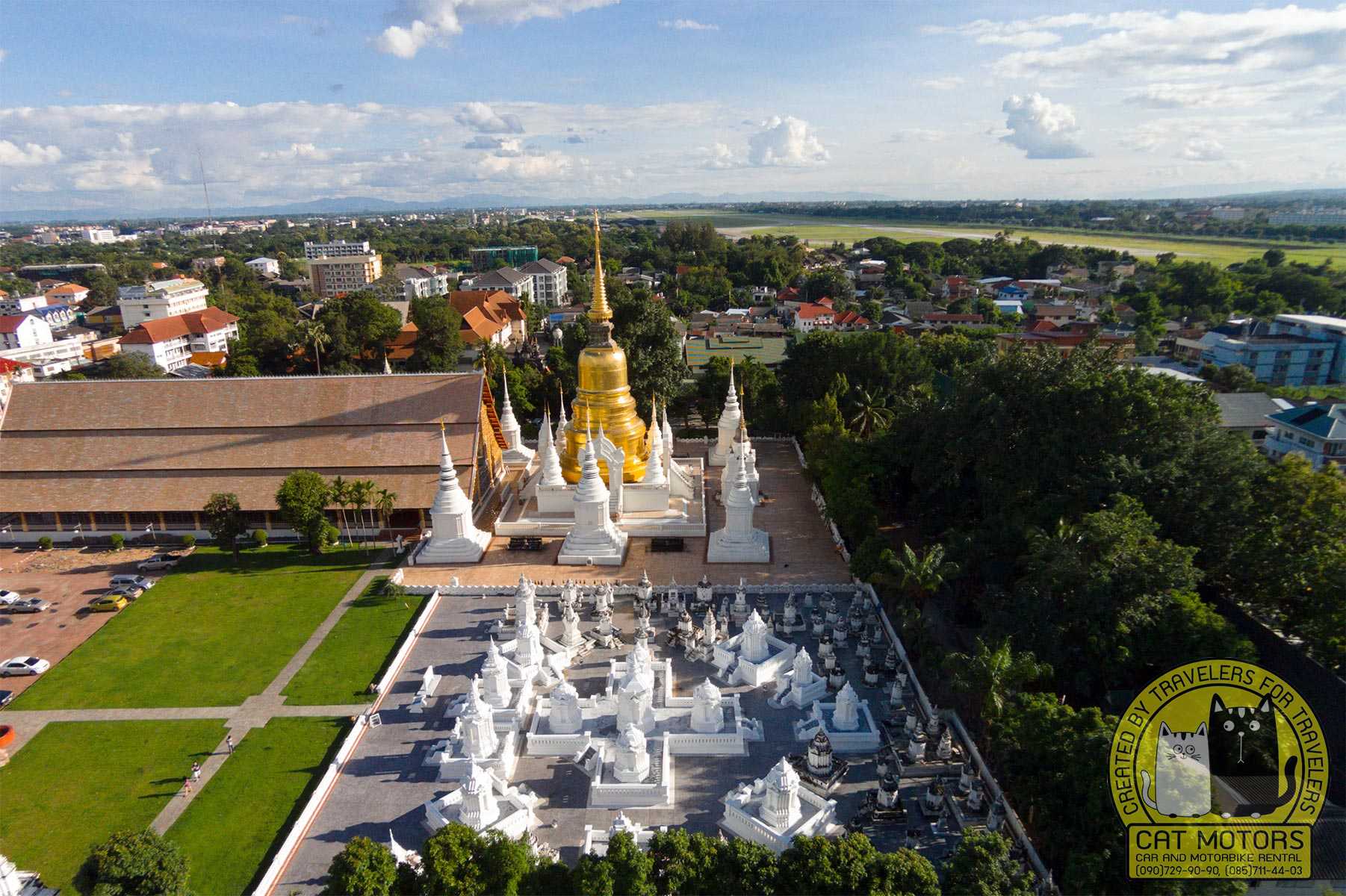
The architecture of Wat Suan Dok is also quite remarkable – its white walls are decorated with intricate stucco and decoration, and elegant spires crowned with gold and silver pagodas.
Major Attractions
The temple is home to many attractions, such as a statue of the reclining Buddha and a Lanna-style chedi. There is also a library containing numerous Buddhist scriptures that visitors can study. In addition, various religious Buddhist events and ceremonies are regularly held at Wat Suan Dok.
Chedi Wat Suan Dok
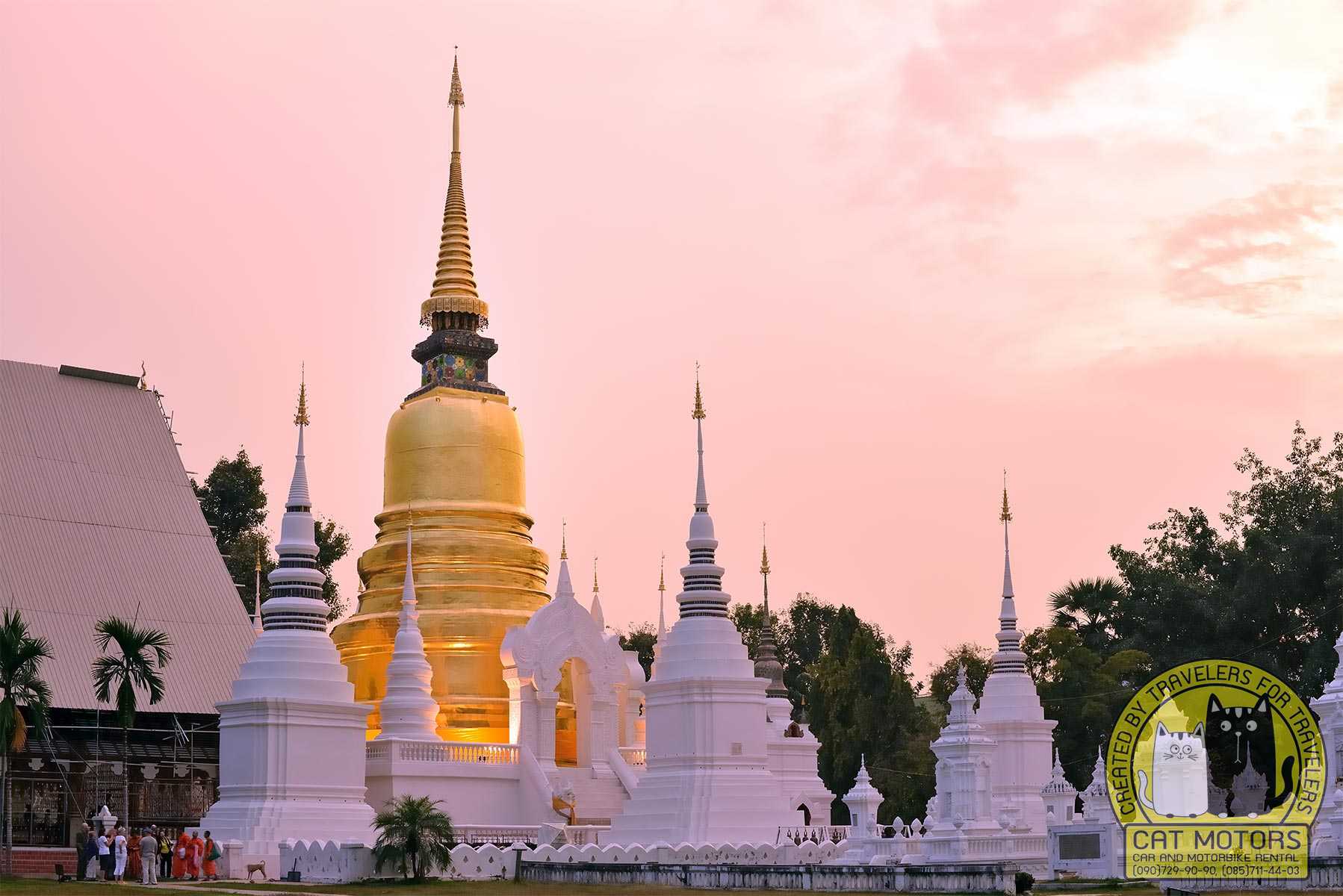
A large 48-meter chedi shaped like a bell, built in the Sri Lankan style in 1373, which can be seen from afar. It is believed to contain a relic of the Buddha. The ramps leading to the chedi are decorated with seven-headed nagas, typical of the classical Lanna style.
Ceremony Hall
The large Kan Prian Hall, which means “preaching hall” in Thai, is right next to the main chedi to the east. The famous monk Phra Khruba Siwichai built it in 1932. He also made the ubosot and fixed up the main chedi.
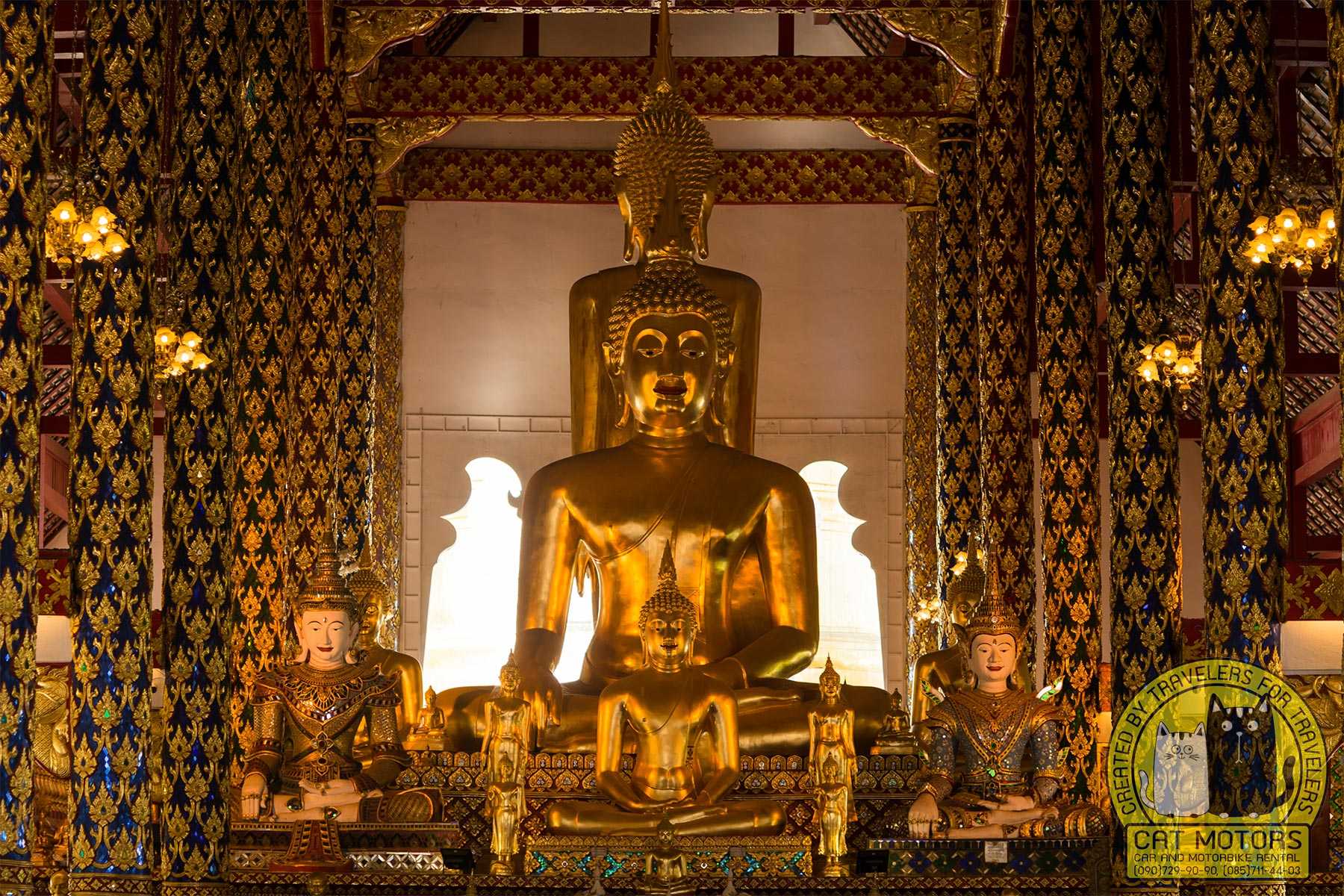
Inside the hall, the main Buddha statues are set up to look in opposite directions. The Buddha sitting in meditation (Bhumisparsha Mudra) is shown with his back to the east.
If you are interested in the meanings of the Buddha’s mudras, you can read the meanings of these by downloading a PDF file from Stanford University’s website
Another figure, a standing Buddha with a bundle of straw in his hand, faces west toward the chedi. In front of the sitting Buddha statue stands a small Lanna-style Buddha from King Kue Na’s time. The feet of this statue is unusual because each toe is shaped differently. This is a style that came from Sri Lanka. Other Buddha statues, some of which are from the 1930s, stand on either side of these images.
Traditionally, all Buddha statues should face east, toward the rising sun. Here, however, the two Buddha statues have their backs to each other, with the Buddha in the lotus pose facing east and the standing Buddha facing west. The reason for this is obvious – the chedi that is located here. It is the sacred chedi that the second statue looks at, as it is no less revered here than the sun.
Phra Chao Kao Tue
The 4.7-meter statue of the Buddha Phra Chao Khao Tue, made of bronze in 1504, is also very famous among the people of Thailand. It is a combination of different artistic styles of Thailand, the elongated phalanges of the fingers attribute the statue to the Sukhothai style, and the features of the clothing – to the style of the kingdom of Ayutthaya.
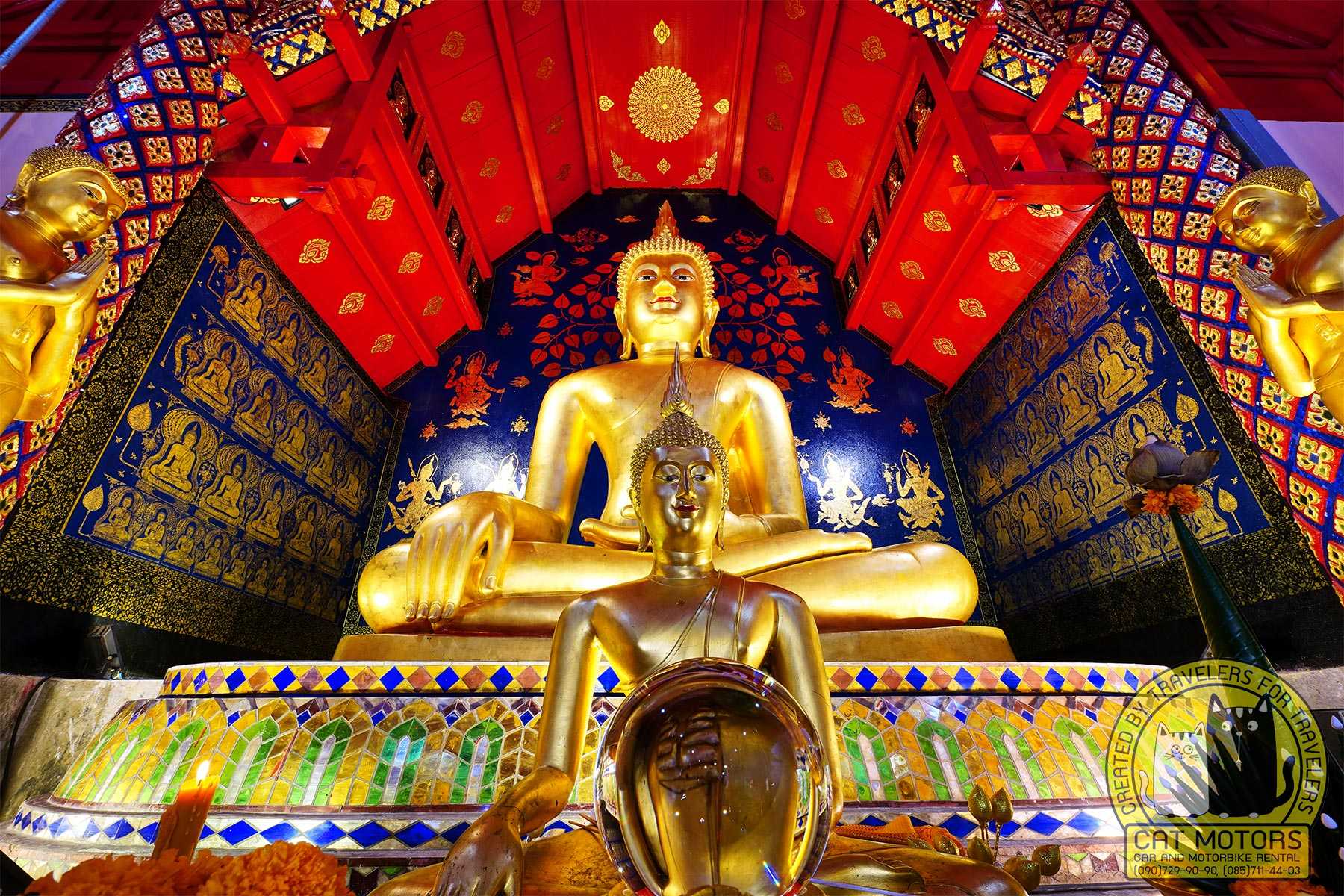
It is worth specifying that the statue is located in the ubosot, a room for special ceremonies and monks, and women are strictly forbidden to enter. For lay men, the ubosot is open only a few days a year.
Mondops
However, the first thing that will surprise you here is not a stupa, but shining white dozens of small chedis, which are actually the repositories of ashes of the royal family members and rulers of Chiang Mai.
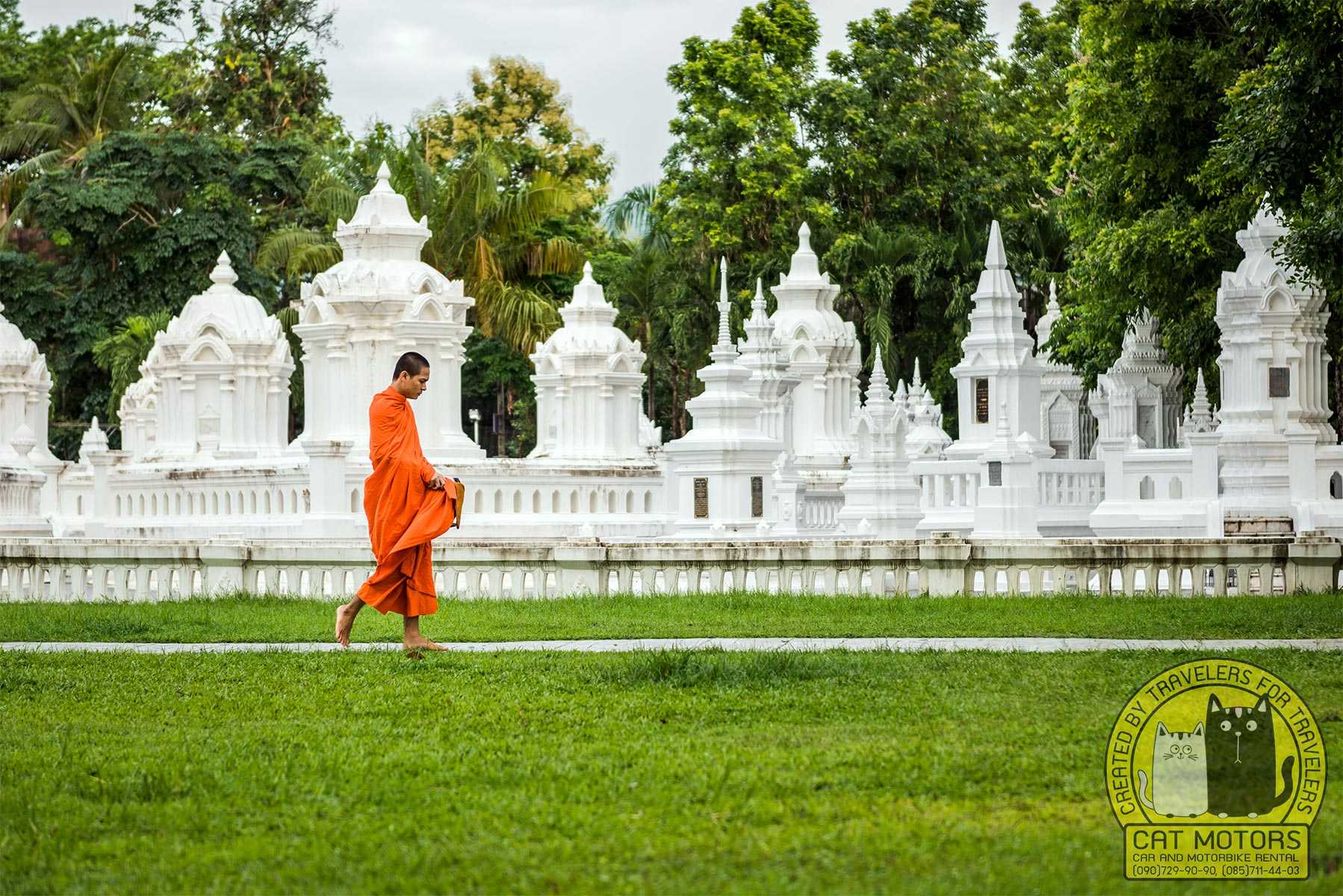
Unusual “cemetery” began when in the early twentieth century, a princess named Dara Rasmi, who is the wife of King Rama V and daughter of Ruler of Lanna King Inthavichayanon, decided to collect together the ashes of their ancestors, which at the time were located in various temples and palaces of Chiang Mai.
Celebrations, Rituals & Events
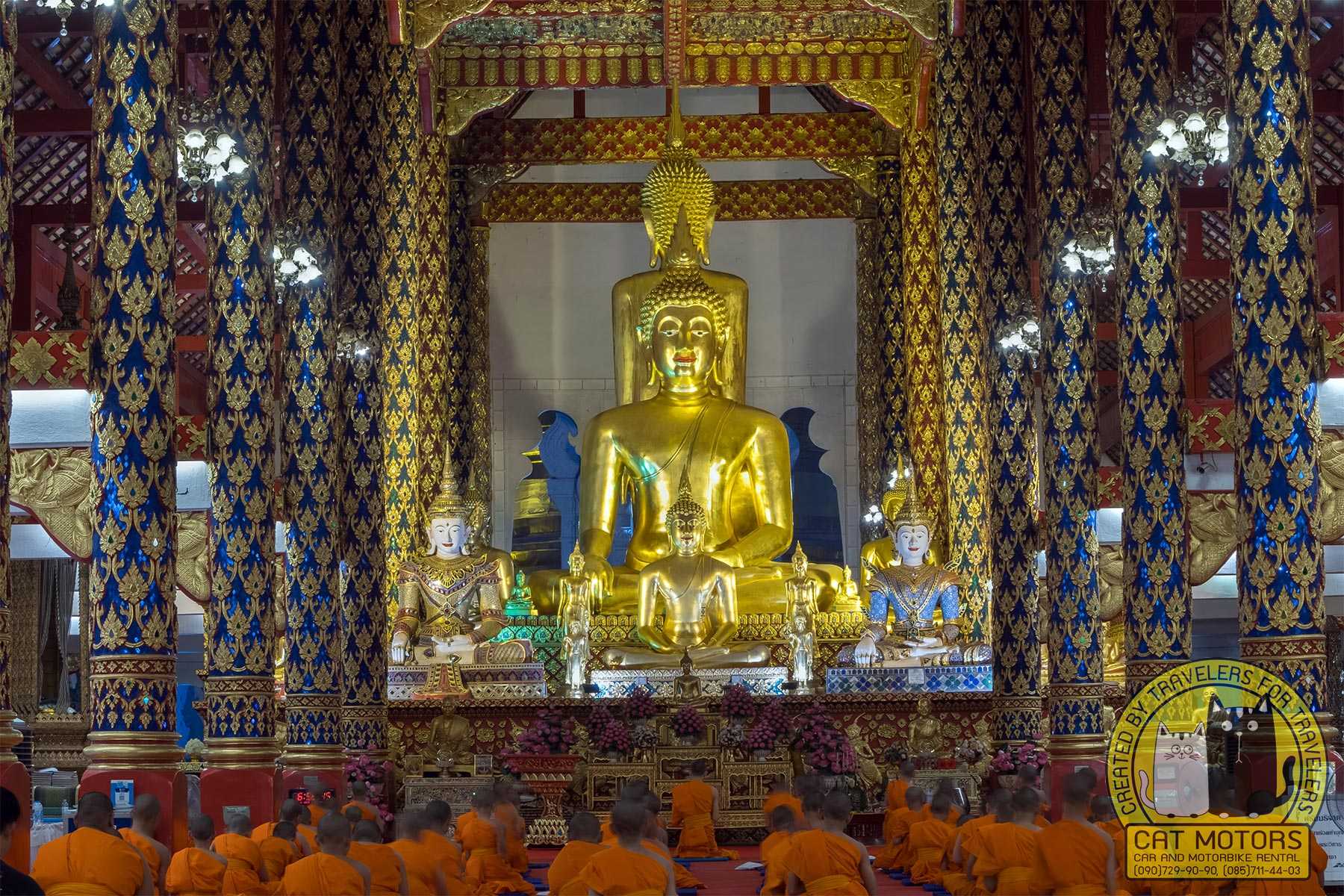
Throughout the year, Wat Suan Dok hosts some significant events, including the annual temple fair held in June. The fair attracts thousands of pilgrims to celebrate Buddhism and participate in various religious activities. The temple also hosts rituals and ceremonies, such as reciting prayers and meditation.
Respectful Ways To Participate In Meditations
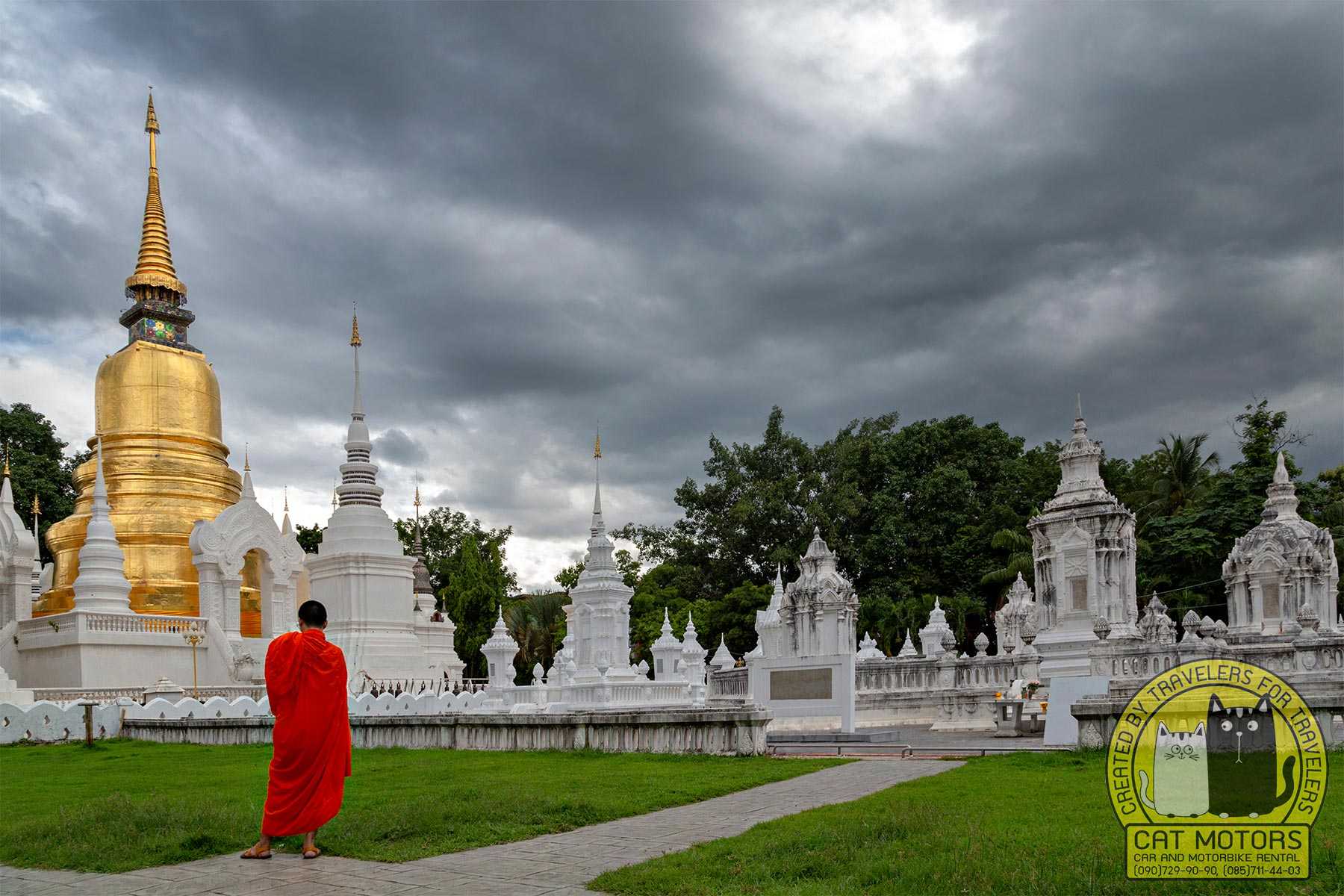
Several meditations and chants are held daily at Wat Suan Dok, and visitors are welcome to participate. However, it is essential to observe the traditions and customs of Buddhism — turning off phones and cameras, sitting quietly, and refraining from talking during the session. In addition, visitors should not disturb the monks during meditation by keeping their distance and refraining from sudden movements.
Photography Rules
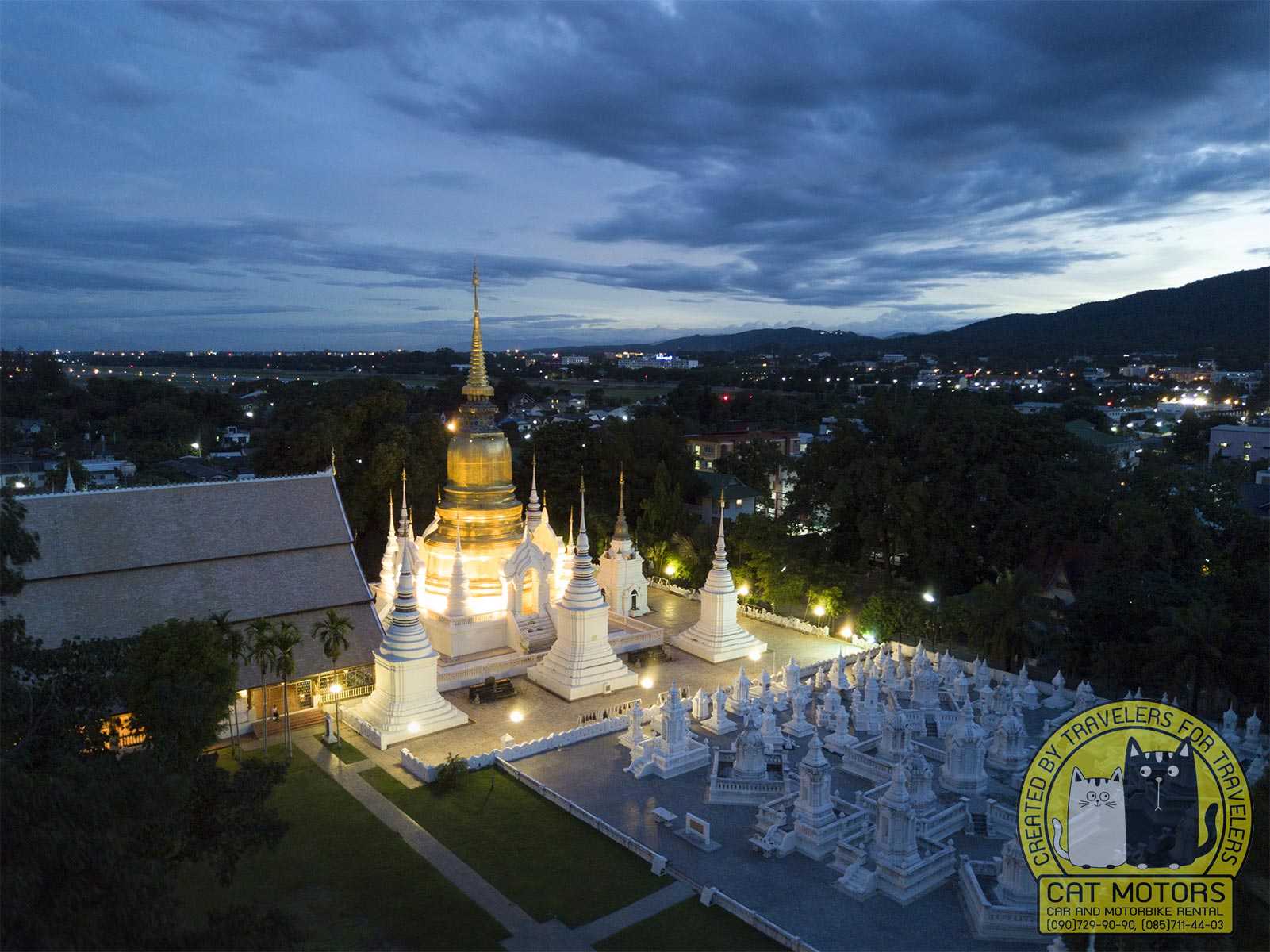
Visitors may take pictures of the temple, but it is important to ensure that you do so respectfully. Always ask permission before photographing people, and be aware of any actions that might be seen as interfering or intrusive. Remember to be polite when photographing worshippers and never take pictures of private areas of the temple. Never turn your back on a statue of Buddha in Ubosot or Viharn.
Cultural Differences To Be Aware
Since this is a Buddhist temple, visitors should be mindful of local customs and traditions. For example, always show respect when participating in activities, such as taking off your shoes when necessary, and remember that some places may be considered sacred. Also, visitors should dress modestly and avoid excessive noise when visiting the temple.
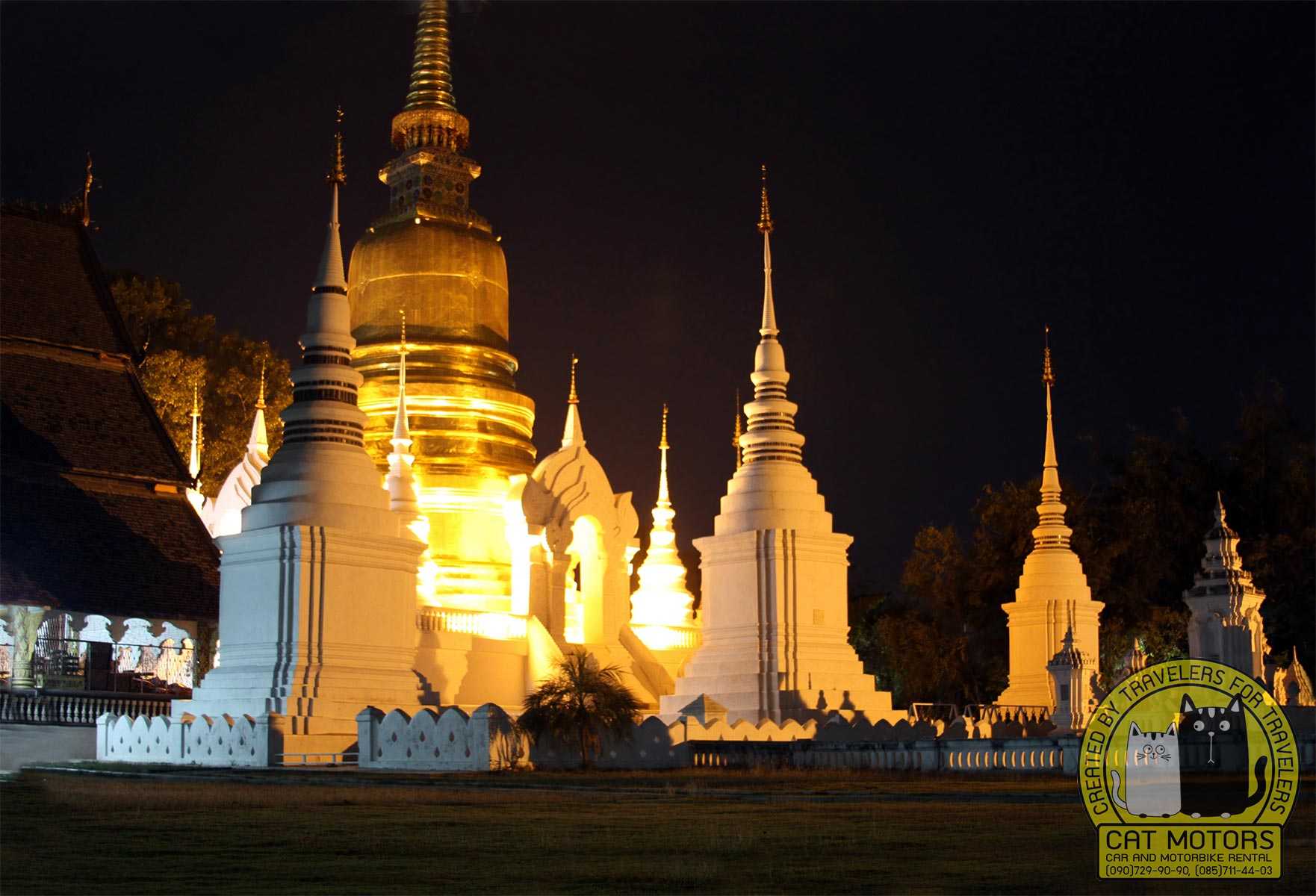
Don’t climb sacred mausoleums or the walls around mongdops! First, it is disrespectful to the shrines of the rulers of the Lanna Kingdom, as well as to any deceased person. Secondly, you disgrace yourself in the eyes of local people because you show your lack of culture.
Tips for Foreign Tourists
When visiting Wat Suan Dok, there are a few things that foreign tourists should keep in mind to make the most of their visit:
- Be respectful: As with any religious site, visitors should dress modestly and remove their shoes before entering any buildings. Visitors should also be respectful of any ongoing ceremonies or rituals and avoid disturbing them.
- Visit early in the day: Wat Suan Dok can get quite crowded later in the day, so it’s best to visit early in the morning to avoid the crowds.
- Take a guided tour: Many tour companies offer guided tours of Wat Suan Dok, which can provide valuable insight into the temple’s history and significance. Alternatively, visitors can hire a local guide to show them around.
- Explore the grounds: While the main temple buildings are certainly impressive, visitors should also take the time to explore the rest of the temple grounds. There are numerous smaller buildings, statues, and gardens that are well worth seeing.
- Check the calendar: Wat Suan Dok hosts numerous festivals and events throughout the year, so visitors should check the calendar to see if there are any special events happening during their visit.
Aside from Wat Suan Dok itself, there are several other sights in the area that are worth visiting:
- Doi Suthep: This nearby mountain is home to the famous Doi Suthep temple, which offers stunning views of Chiang Mai and the surrounding countryside.
- Nimmanhaemin Road: This trendy street is home to numerous shops, restaurants, and cafes, and is a great place to spend an afternoon.
- Chiang Mai Night Bazaar: This bustling market offers a wide variety of souvenirs, clothing, and food, and is a great place to experience the local culture.
Nearby Sights and Attractions
Wat Suan Dok is located in a great area for tourists, with many other attractions nearby. Here are a few suggestions for places to visit:
- Wat UMong: This temple is located just a few kilometers from Wat Suan Dok and is known for its underground meditation tunnels. Visitors can explore the tunnels and enjoy the peaceful atmosphere of the temple grounds.
- Chiang Mai Night Safari: This zoo and safari park is located about 8 kilometers from Wat Suan Dok and is a great place to visit in the evening. Visitors can see a variety of animals, including tigers, lions, and giraffes, and can take a tram ride through the park.
- Mae Sa Elephant Camp: This elephant sanctuary is located about 25 kilometers from Wat Suan Dok and is a popular attraction for tourists. Visitors can watch the elephants bathe and play, and can even ride them through the jungle.
- Doi Suthep-Pui National Park: This national park is located about 20 kilometers from Wat Suan Dok and is a great place to go hiking or enjoy the natural beauty of northern Thailand. Visitors can see waterfalls, forests, and stunning views of the city from the top of Doi Suthep mountain.
These are just a few of the many attractions near Wat Suan Dok. Visitors to the temple can easily spend a day exploring the surrounding area and experiencing the rich culture and natural beauty of Chiang Mai.
Quick Facts
1. Location: Wat Suan Dok is located in Chiang Mai, Thailand, specifically on Suthep Road, west of the Old City (Google Map).
2. History: Wat Suan Dok is a prominent Buddhist temple with a rich history dating back to the 14th century. It was originally built as a royal garden and later converted into a temple.
3. Meaning of the Name: “Wat Suan Dok” translates to “Temple of the Flower Garden.” The name is derived from the temple’s picturesque gardens filled with various types of flowering plants.
4. Architecture: The temple features a blend of traditional Lanna (Northern Thai) and Burmese architectural styles. It is characterized by its large white chedi (stupa) that houses the relics of Chiang Mai’s royal family.
5. Monk Chat: Wat Suan Dok offers the opportunity for tourists to engage in “Monk Chat” sessions. Visitors can have conversations with Buddhist monks, learn about their way of life, and ask questions about Buddhism.
6. Meditation Retreats: The temple also hosts meditation retreats for those interested in exploring the practice of mindfulness and meditation. These retreats provide a serene environment for self-reflection and inner peace.
7. Monk Alms-Giving: Every morning, visitors can witness the ritual of alms-giving, where Buddhist monks collect offerings of food from locals and devout Buddhists. It’s a unique cultural experience that allows tourists to participate respectfully.
8. Opening Hours: Wat Suan Dok is open to visitors daily from early morning until evening. It’s advisable to check the specific opening hours beforehand to plan your visit accordingly.
9. Dress Code: As with any Buddhist temple in Thailand, it’s important to dress modestly and respectfully. Both men and women should cover their shoulders and knees while inside the temple complex.
Remember, this is just a general list, and there may be additional activities, events, or specific guidelines that can enhance your experience at Wat Suan Dok.
Pros & Cons
Pros
- Wat Suan Dok is a beautiful temple complex located in Chiang Mai, Thailand.
- The temple complex is home to several important and beautiful Buddhist temples, statues and monuments.
- The temple complex is surrounded by lush and peaceful gardens, making it the perfect spot for a relaxing stroll.
- The temple hosts several events and cultural activities, making it a great spot for visitors to experience the local culture.
- The temple complex is also a great spot for photography, with stunning views of the temples and gardens.
Cons
- The temple complex can get crowded during peak times.
- Some parts of the temple complex are not accessible to visitors, due to religious restrictions.
- The temple complex is subject to strict rules and regulations, which must be adhered to.
- The area can be noisy, due to the nearby traffic and construction.
YT Review
FAQ
Sure, Wat Suan Dok is definitely worth a visit. It is a beautiful temple with a rich history and plenty of interesting sights to explore.
Wat Suan Dok, like Wat Chiang Man, is located in Chiang Mai, Thailand. To get there, you can take a taxi, tuk-tuk, or songthaew from the city center.
Wat Suan Dok is open from 8:00am to 5:00pm daily.
Around Wat Suan Dok, you can explore the temple grounds, visit the nearby Wat Chedi Luang, and take a stroll through the nearby flower gardens.
There are many cafes and eateries nearby, as well as McDonald’s. A 2-minute drive away is Nimmanhemind, the most famous tourist area of the city, where you can find all kinds of food for every taste.
Monks at Wat Suan Dok are responsible for caring for the temple grounds and conducting religious activities such as prayers, teaching meditation, and ritual ceremonies. They are also custodians of the temple’s unique collection of scriptures and other religious artifacts.
When visiting Wat Suan Dok, it is essential to dress modestly and respectfully. Both men and women should cover their arms and legs, wear skirts or long pants, and remove their shoes before entering buildings. T-shirts, shorts, and other revealing clothing are unacceptable and should be avoided.
When visitors arrive at the temple, a relaxed atmosphere awaits them. There are many rooms to explore, including the main prayer room, meditation room, and library. Visitors can also learn more about Thai culture and religion by participating in traditional activities such as offering monks food or a special blessing ceremony.
Wat Phra Singh, a revered temple in Chiang Mai, is known for its beautiful Lanna-style architecture and the Phra Singh Buddha statue.
The Chiang Mai Old City, surrounded by a moat and ancient walls, is a must-visit destination for its historical temples, charming architecture, and cultural sites.
The Chiang Mai City Arts & Cultural Centre is an excellent museum to learn about the history, culture, and traditions of Chiang Mai and Northern Thailand. You can also visit Baan Kang Wat artists village.
The Buak Haad Park, a beautiful and well-maintained public park, offers a relaxing atmosphere for leisurely walks, picnics, and photography.
The Chiang Mai Sunday Walking Street Market and the Warorot Market are popular choices for discovering local handicrafts, Thai street food, and a vibrant atmosphere.
Set off on a memorable adventure through Northern Thailand with our comprehensive travel guides. Highlighting the most scenic routes and must-see local spots, our guides ensure you don’t miss a thing. Start your journey by exploring our motorbike rental in Chiang Mai homepage. Don’t forget to read through our terms and conditions for a smooth experience. With these preparations, you’ll be ready to explore beautiful mountain trails and quaint villages.
In addition to safety tips, our travel advice sections offer insights into the local culture and traditions, helping you to connect more deeply with the communities you visit. Learn the best times to attend local festivals, discover hidden gems off the beaten path, and find out how to make the most of your motorbike adventure. Our detailed guides ensure you have all the information needed for a safe, enriching, and enjoyable journey through Northern Thailand’s breathtaking landscapes and vibrant culture.
- Author: Krit Sorenser
- Updated: 15/09/2025
- No Comments
